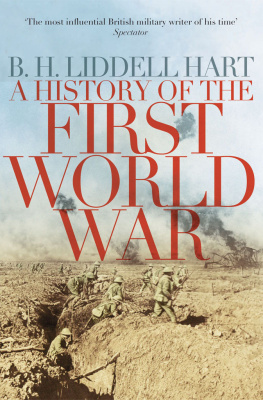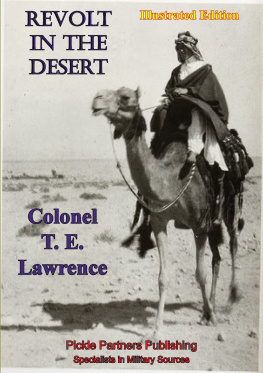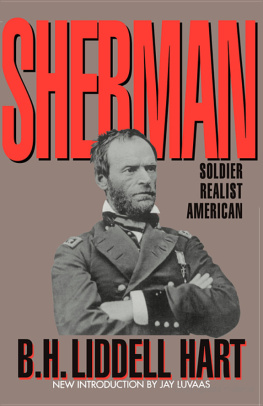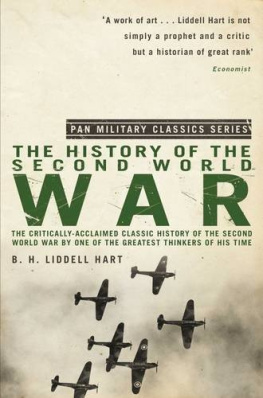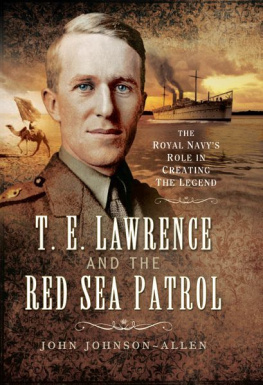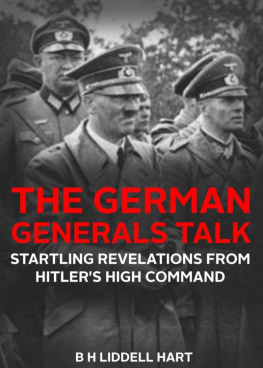
This edition is published by Arcole Publishing www.pp-publishing.com
To join our mailing list for new titles or for issues with our books arcolepublishing@gmail.com
Or on Facebook
Text originally published in 1934 under the same title.
Arcole Publishing 2018, all rights reserved. No part of this publication may be reproduced, stored in a retrieval system or transmitted by any means, electrical, mechanical or otherwise without the written permission of the copyright holder.
Publishers Note
Although in most cases we have retained the Authors original spelling and grammar to authentically reproduce the work of the Author and the original intent of such material, some additional notes and clarifications have been added for the modern readers benefit.
We have also made every effort to include all maps and illustrations of the original edition the limitations of formatting do not allow of including larger maps, we will upload as many of these maps as possible.
COLONEL LAWRENCE
THE MAN BEHIND THE LEGEND
BY
LIDDELL HART
TABLE OF CONTENTS
Contents
TABLE OF CONTENTS
PREFACE
THIS book has changed its form as it has progressed. I began it with the idea of writing an historical sketch of the Arab Revolt in which T. E. Lawrence would naturally fill a large corner. My purpose was to clear away the dust of legend that has covered this peculiarly interesting episode of the World War, and to put it in perspective, bringing out its relation to the main campaign and to the history of irregular warfare. Also I desired to establish the true proportions of Lawrences personal achievementwhich I expected to be less than legend conveyed.
But as my study went further and deeper my picture changed. The events that had significance were seen to have their source in his action, and, still more, in his conception. The others faded into insignificance. I saw that there was a truth greater than its superficial suggestion in his deprecatory comment that his partwas only synthetic. I combined their loose shower of sparks into a firm flame: transformed their series of unrelated incidents into a conscious operation.
Although he was here speaking only of his relations with the Arab chiefs I have gradually come to see that it should be applied to the whole.
But for him the Arab Revolt would have remained a collection of slight and passing incidents. Through him it had an important bearing on the course of outer events both during and since the war. Also on the course of warfare.
I found him growing more distinct as the background faded, until the Arab Revolt became an emanation of him. Thus I was compelled to recast the book and to make it primarily a study of him.
I have, however, kept the original form of the opening chapters, while diminishing their content, because it may help to convey the gradual sense of how he grew out of the Revolt as the Revolt was growing out of him.
Those who are not interested in the events that led up to the Revolt may prefer to skip Book II (Chapters i, ii, and iii). For their convenience a brief historical summary is provided as an introduction to Book III.
My grateful thanks are due to the numerous participants in the campaign, and to others with firsthand knowledge of earlier and later events covered in this book, who have generously assisted me with their evidence in checking and supplementing that of documentary records. Also for the facilities afforded me in regard to such records.
Beyond these sources of information I have been fortunate in that T. E. Shaw (sometime Lawrence) has provided me with many notes and comments that help to explain his ideas and actions, as well as the course of events. These have been of special value. My indebtedness is increased by the astonishing patience he has shown in submitting to prolonged and repeated cross-examination on questions of fact. But I would make it clear that he has no part in the opinions I express or the judgments I have formed.
In seeking evidence from many sources I have found two sharply contrasted currents of opinion as to Lawrences achievement, character, and qualities of leadership. One is overwhelmingly favourable, the other disparagingly sceptical. Such a difference of view is to be expected about any outstanding figure: the remarkable feature of this case lies in the contrast of the composition of the two groups. For it is significant that the first includes all those who for long periods were in close contact with Lawrence and his work in the Arab campaign; although they have an extraordinary diversity of type and outlook they are linked in a common admiration for Lawrence and an unstinting testimony to his transcendent powers. The second current of opinion, I have observed, is composed of men who had only a fleeting contact with Lawrence, or, more often, a hearsay acquaintance with his activities. Usually their adverse attitude is discovered, on deeper examination, to have its roots in a dislike of the cause for which he strove: the man is castigated merely as a symbol.
Thus it is clear which of the two currents must have the greater influence with anyone who is trying to form an historical judgmenteven if the first were not confirmed by analysis of events.
B.H.L.H.
LIST OF ILLUSTRATIONS
T. E. from a drawing by Augustus John
The Kaaba, Mecca
Dawn in Nakhl Mubarak (Feisals encampment) December, 1916
Feisals army coming back into Yanbo. December, 1916
The triumphal entry into Aqaba. July 1917
Feisals Ageyl bodyguard. January, 1917
Captain Lawrence, early in 1917
Outside Feisals tent at Wejh
Railway Raiding Party. Newcombe on left; Hornby on right
Lawrence amid the results of a raid
The Blue Mist in Wadi Ithm
Lawrences Ghazala, and foal
Tulips exploding on the railway near Deraa
Jafar Pasha and Sherif Nasir at Shobek
Lawrence, at Aqaba
Aqaba
Azraq
Lawrence on arrival at Damascus
MAPS
The Near and Middle East
The Hejaz Railway
Arabia, Syria and Mesopotamia
The Hejaz
The Northern Theatre
The Yarmuk Valley
Aqaba-Maan Zone
Amman-Dera Zone
Battle of Tafila
The Palestine Campaign
BOOK IPERSONAL PROLOGUE
CHAPTER ITHE CRUSADER
THE County of Carnarvon in North Wales points like an arm into the Irish Sea. At the armpit lie the villages of Portmadoc and Tremadoc, close beneath the foothills of Snowdon. This resemblance, which catches the map-gazing eye, offers a convenient method of indication. It is also an apt symbol for the career of one who was born here on August 15 th , 1888. History hardly offers a clearer case of a man born for a mission, of a life moving along a path pointed out by fateeven though twists in its course may have hid the direction.
He was of mixed race. His fathers family were Elizabethan settlers from England, favoured in gaining land in County Meath by Walter Raleigh, a connexion. During three hundred years of Irish domicile they never married into Ireland, but chose their wives from intruders such as themselves, from England, from Holland even. His mother was Island Scottish in feeling and education, but her parentage was part English, part Scandinavian. The sympathy of his home was Irish, all the stronger for being exiled. Wales had no share in him, after his first year.





